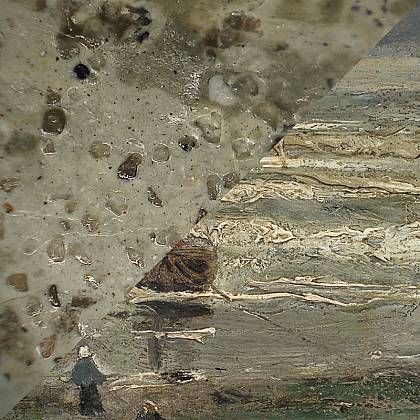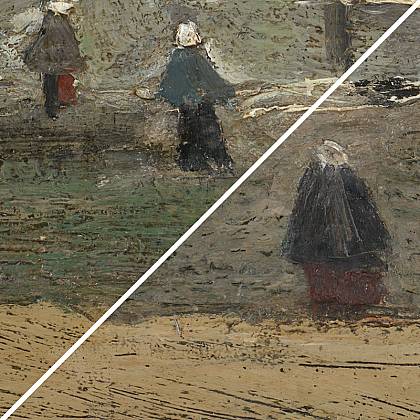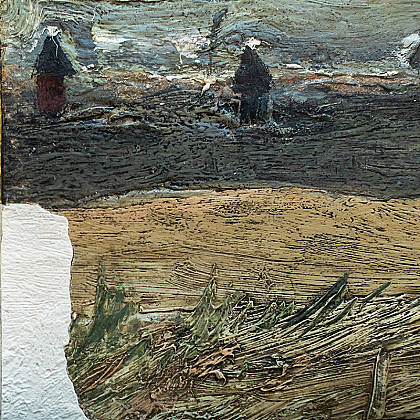On the beach at Scheveningen
View of the Sea at Scheveningen
Van Gogh painted this seascape on the beach at Scheveningen (the Netherlands) in August 1882. There was a storm and he was impressed by the effect of the wind on the waves: ‘furrows of ploughed land’ he wrote to his brother Theo.
It’s been so beautiful at Scheveningen the last few days. The sea was almost more imposing before the storm than when the storm actually arrived. […] The waves followed each other so quickly that each pushed the other aside, and the collision between these bodies of water produced a sort of foam like drifting sand that shrouded […] the sea in a haze. But it was a nasty little storm
Letter to Theo van Gogh, The Hague, 26 August 1882.
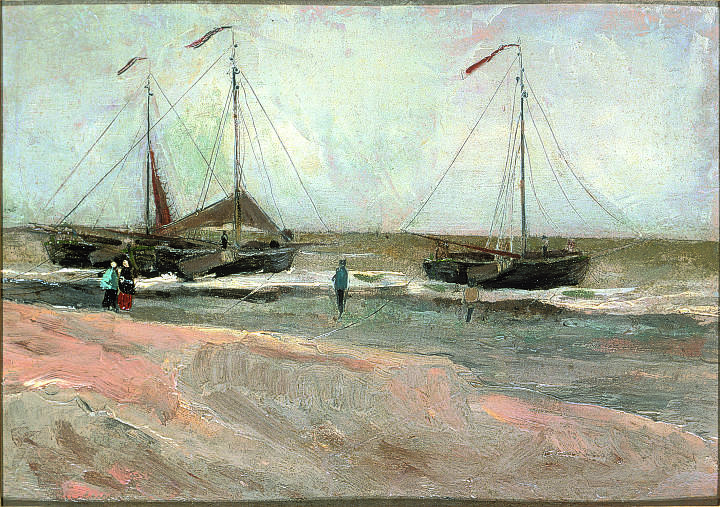
We know of only two seascapes painted during Van Gogh’s period in Holland, both of them in Scheveningen (NL).
The Beach at Scheveningen, 1882. Minnesota Marine Art Museum, Minnesota
Thick brushstrokes
Van Gogh had to work fast because of the wind. He smeared the paint for the crests of the waves onto the canvas thickly and without mixing. His aim was not just to work fast; he also liked to apply paint thickly. That is especially clear under raking light (from the side).
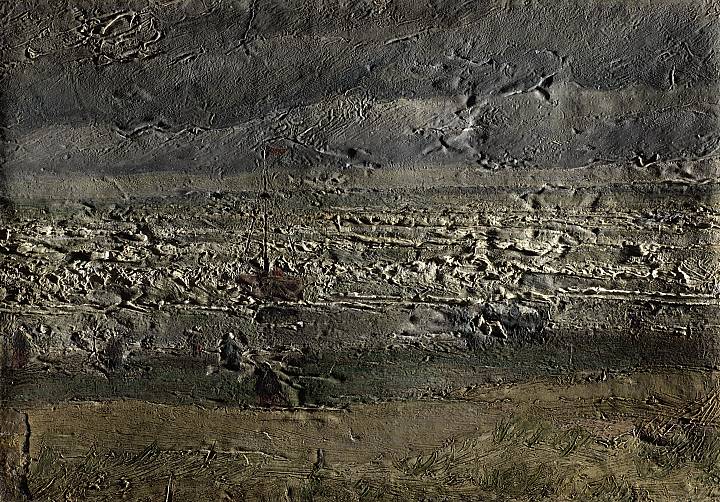
This photograph was taken with light from the side (raking light). This makes it easy to see the thick brushstrokes (the impasto).
A distinctive style
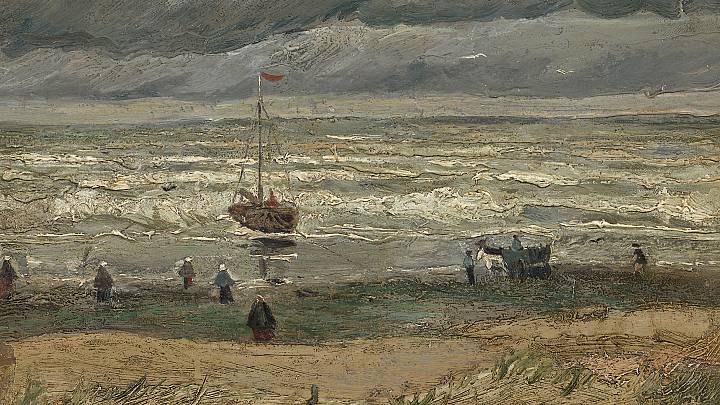
This is one of Van Gogh’s very first oil paintings. Before that time he had hardly painted anything, only a few still lifes under the supervision of artist Anton Mauve. Yet the style is typical Van Gogh: if you look closely, you can see the vigorous brushwork for which he would become so famous.
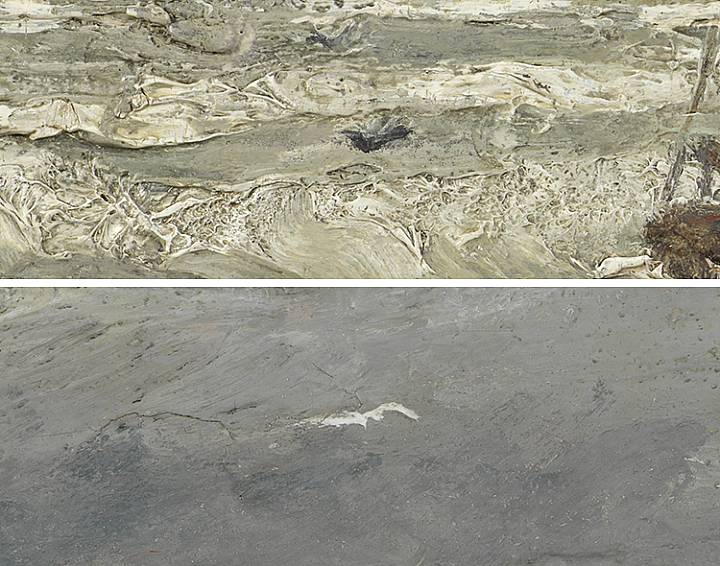
Van Gogh knew that a colour is influenced by the surrounding colours. Look at the seagull: it appears dark against the white crests of the waves. Against the dark clouds, the other bird looks white.
